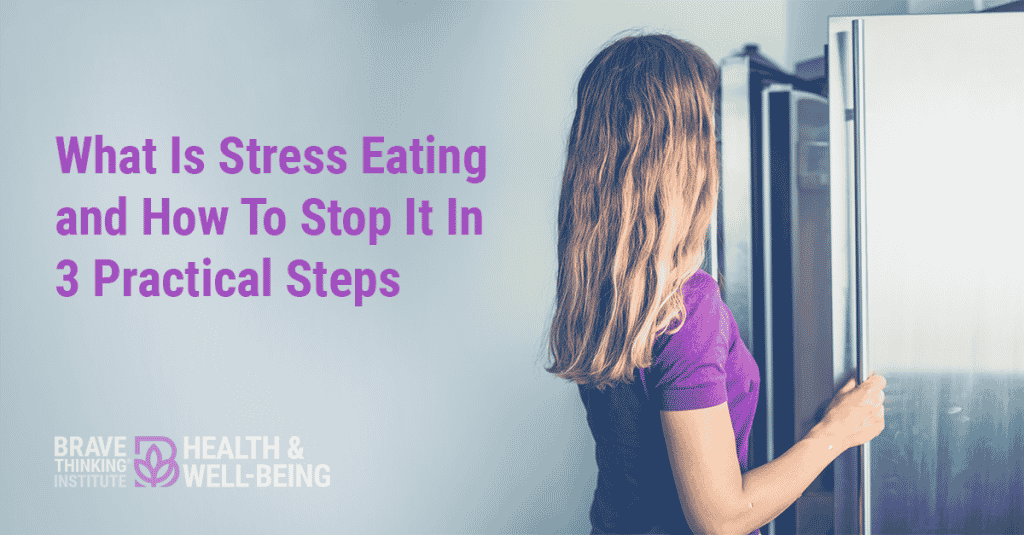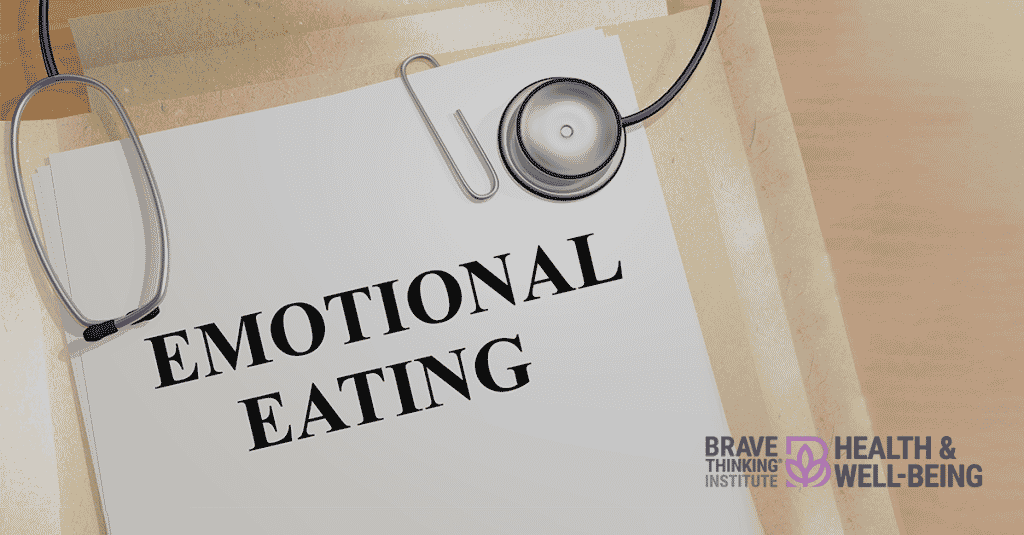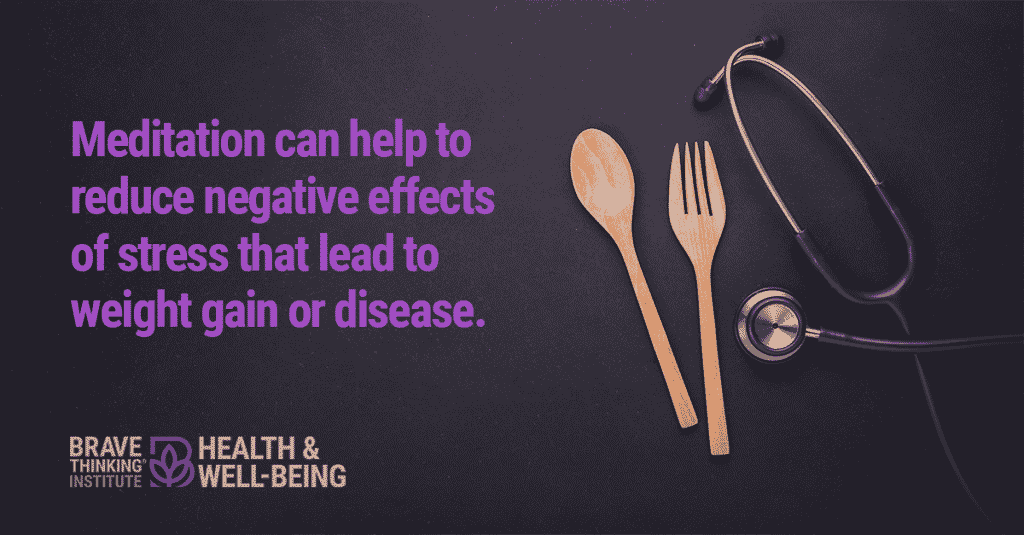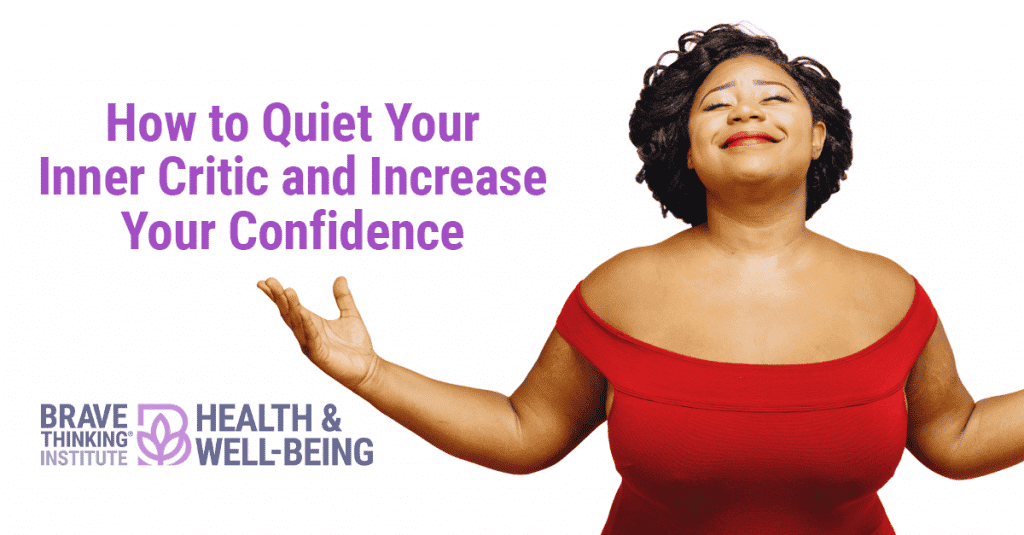Do you find yourself turning to junk food or comfort foods during uncertain times?
Perhaps you reach for a pint of ice cream, a bag of chips, or a box of donuts during stressful events, or you find yourself engaging in mindless eating of unhealthy foods when you’re feeling uncomfortable emotions?
If you’ve ever wondered where all the popcorn went when you’ve reached the bottom of the bag while sitting at the movies or in front of the TV, you’re not alone! You’ve experienced “unconscious eating.”
Food cravings and binge eating during times of high emotional stress is often called stress eating, or emotional eating, where you’re eating to fill an emotional need instead of actual physical hunger.
And it seems even more likely to happen when we’re distracted while working at a computer, scrolling through the news feed on the phone, or watching TV.
If any of these things have ever occurred, know that there is a solution.
You can create an even more balanced and healthy lifestyle. Many of my health & wellbeing coaching clients, when they first come to me for help, have found themselves unconsciously eating during stressful times, including “comfort foods” that have high amounts of sugar, salt and fat that can pack on pounds.

And this kind of “unconscious eating” can lead to excess weight, lower energy levels and even increased negative feelings — often leading to a vicious cycle of even more stress eating!
But when you stop to notice when this is happening and what is triggering you, you can start the process of creating a more peaceful relationship with food, create healthy eating habits, and make even better food choices. This can lead to losing the excess weight, and creating more happiness, health, and joy in your life, even during uncertain, turbulent times.
3 Practical Steps to Stop Stress Eating
In working with thousands of health and wellbeing clients around the world and helping them to move from eating as a stress response to effortlessly releasing weight, and creating vibrant health, I’ve identified 3 practical steps to stop stress eating, so you can channel that energy into something much more empowering and life-giving!
(If you think food addiction might be an issue, you might consider professional medical advice, or exploring working with a mental health professional.)
Step One: Realize what drives your behavior.
We all have unconscious belief systems – aka “paradigms” – that unconsciously drive our behaviors, including unconsciously eating when we are stressed, or under emotional distress.
A paradigm is simply an unconscious belief system that creates thoughts, which create feelings, which drives actions, that create results in your life.
It looks like this:
Beliefs – Thoughts – Feelings – Actions – Results
Our paradigms are always running the show whether we realize it or not! Have you ever witnessed someone who lost a lot of weight and then struggled to keep it off, ultimately gaining it all back? It’s often a result of not addressing their inner limiting beliefs, or paradigms.
More often than not, stress eating is a symptom of not getting nourished mentally, emotionally, and spiritually, in addition to physically.

Now that you are aware that there are subconscious beliefs driving your behavior, it will be easier to see how just seeking to change the behavior without addressing what is driving the behavior isn’t enough.
You might now be wondering how to address your subconscious beliefs.
Step Two: Notice how you’re feeling
A great first step is to simply realize you are a spiritual being having a human experience.
You and the power breathing you are more powerful than any circumstance, situation or condition.
This disempowering behavior doesn’t have control over you. You can start a shift by simply staying awake to what’s going on around you and in your life when you notice the craving begin.
You can also pause and ask yourself a series of powerful questions.
You’ll start to see patterns of when and how you’ve taken comfort in food when you felt uncomfortable emotions. Just take a moment to pause, and get curious. What are you feeling in that moment? Simply notice what you’re noticing, and write it down.
Common Triggers for Stress Eating
Common triggers for stress eating include uncomfortable emotions like stress, sadness, anger or grief. Know that there’s nothing wrong with feeling any of these emotions. And it’s a great step forward when you recognize when you’re stress eating as you’re feeling these emotions.
Here are questions I give clients to ask themselves when they notice themselves stress eating:
- What am I feeling right now?
- Do I have an underlying belief about what’s going on?
- What is the Truth in this moment?
- Is there something I am actually wanting, needing in this moment?
- What am I really craving?
- Inspiration? (vs boredom eating)
- Stress relief? (vs stress eating)
- Pleasure/fun? (vs eating to serve this desire)
- Emotional support? (vs stuffing or suppressing our feelings with food)
- Connection and Companionship? (vs eating to fill a void or loneliness)
We all have blind spots and deeper places that we simply can’t coach ourselves through, because we can’t see them on our own.
A good transformational coach can help you identify your blind spots, so that your paradigms stop running the show! They can also help you create healthy habits and work healthy foods into your regular meals that nourish your body. (To learn more about my Vibrant Healthy Woman Coaching Program so you can feel more confident in your body and more radiant, vibrant and alive in your life, click here.)
Deep-rooted food issues have an origin that goes back far, often as far back as infancy, and are tied in with the survival instinct. Looking at paradigms is a little like peeling back the layers of an onion, where eventually you get to the core of the issues that cause unconscious eating.
When you start to recognize these paradigms, you begin the process of releasing their hold on you. I’ve described it as releasing yourself from a self-imposed prison, and finally being free.
Step Three: Practice Mindful Eating
I describe mindful eating as slowing down to really experience what you’re eating, without distractions, and taking time to experience the meal as you eat. And simply removing the distraction of phones, computers, smart devices and television can lead you to slow down and actually eat less.
For those of us who work at home, or even in an office, not eating in front of your computer can be a challenge. But working at a computer or looking at your phone while eating can increase your stress levels, which interferes with digestion. By taking deep breaths before a meal and slowing down your eating, you can savor your food, and really feel what it’s like to nourish yourself.
In my own family, I’ll find my kids sometimes looking at their phones while they’re eating breakfast, or at the dinner table as we go around talking about our highs and lows of the day. They may not like me temporarily for telling them to put down their phones, but I want them to learn how to actually feel their bodies and not be completely disassociated when they’re eating. Plus, we get to make an emotional connection while eating which is so very important.
You can start by scheduling time to eat intentionally and mindfully. I find that if I can finish a meal in 10 minutes while working on a computer, I can finish the same meal, using mindful eating in just 15 minutes when I’m not doing anything else but eating, chewing my food, and savoring the meal, using it as a perfect time to reset without distractions or the blue light emitted from a screen.
One of my favorite mindful eating practices follows these steps:
1- Pause and be grateful for my food, taking a deep breath.
2- Say an affirmation: “With each bite I eat I create even more vibrant energy and health in mind, body, and spirit.”
3- Visualize each bite turning to golden light and love and giving your body the perfect fuel it requires to thrive. And releasing anything it doesn’t want or need.
You can also pause to take a look at the kinds of foods you’re eating, including making empowered choices to replace processed foods with healthier substitutes that truly nourish your body.

Another great way to slow down and experience increased mindfulness is through meditation. This practice can also help to reduce other negative effects of stress, including higher cortisol levels, that can lead to weight gain or other issues like heart disease.
Practicing my LOVE Your Body Guided Weight Loss Meditation will help you experience more mindfulness and feel in alignment with the vibrant, healthy part of you that’s always within you, in alignment with your ideal weight.
After practicing this meditation, you’ll feel more confident in your body and able to release weight with greater ease! Best of all, the meditation is absolutely free and instantly downloadable, so you can experience it right away. Click here to download the meditation.
Now it’s your turn…
Have you ever experienced issues with emotional eating during challenging periods in your life?
Did you overcome these issues, or are they still a struggle for you?
What healthy habits have you tried or adopted to reduce emotional eating?
And what tips will you use to prevent emotional eating in the future?
Leave a comment below – our amazing community would love to hear from you!
To mindful eating and even more Vibrant Health,
Jennifer




Leave a Reply